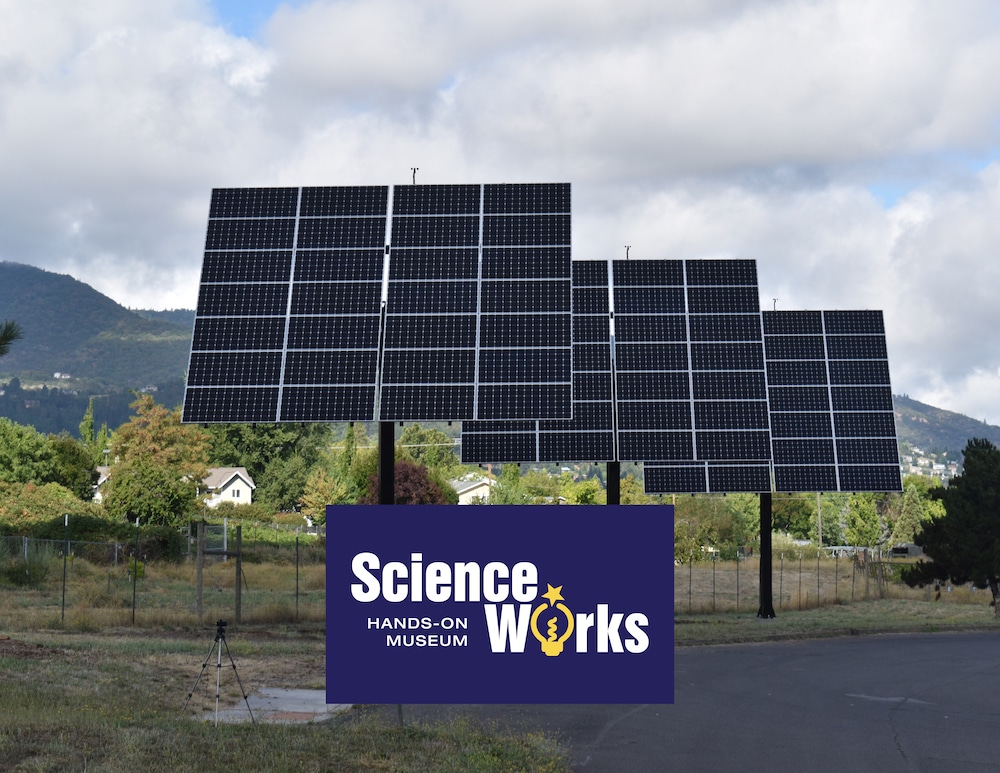By Billy Ludt | August 26, 2019
The ScienceWorks Hands-on Museum in Ashland, Oregon, is now home to three of STracker’s Model S1B elevated solar trackers. The units are designed, fabricated, and tested in Ashland and were chosen for this project for efficiency and ability to allow continued use of the ground below.
The installation was completed in 15 days by Sharpe Energy Solutions, local solar co-op members, and True South Solar. The installation is a high-visibility kickoff project for the citizens of Ashland Community Solar (ACS) as they start development of 5 to 10 200-kW community solar rooftop systems in the city. ACS is also helping form the Ashland Solar Co-op to distribute the power that these projects produce.
Sharpe Energy Solutions installed three of STracker’s Model S1B elevated solar trackers at ScienceWorks’ Hands-on Museum in Ashland, Oregon.
ACS’s community solar projects use federal tax credits, grants and the City of Ashland’s virtual net metering ordinance, which credits power produced directly to an Ashland Electric customer’s monthly billings.
The dual-axis tracking STrackers boasts 40% more solar energy production than a fixed ground mount or rooftop arrays. The STracker articulates an array of 28 PV modules atop its 20-foot pole while monitoring and reporting wind speed and other parameters. Their minimum 14 ft ground clearance keeps their equipment out of reach while assuring continued use of the land below.
“We are honored to be showcasing the new Model S1B in this kickoff installation and are excited for the opportunities the solar co-op brings [to the] community,” said Jeff Sharpe, project lead for STracker. “Hopefully the project provides an impressive visual statement of the community’s commitment to innovation and sustainability.”
The ScienceWorks museum will allocate a portion of the power the system produces and is planning educational opportunities regarding the STrackers. Future phase plans for the site include more STrackers, EV charging stations, an electric shuttle bus and a microgrid using battery storage.
It is hoped these projects will couple with the community solar rooftop installations to accelerate the city’s transition to cleaner, more resilient energy sources for a more secure and sustainable energy future.
“We believe the science and we have invested in the technologies of the future,” said Brad Roupp, Ashland Solar Co-op board member. “In the near future, community solar projects like this will allow all Ashland residents to purchase locally-generated solar power without investing in a photovoltaic system of their own.”
News item from Sharpe Energy Solutions
Original Solar Power World Article: https://www.solarpowerworldonline.com/2019/08/stracker-dual-axis-solar-trackers-at-oregon-museum/

